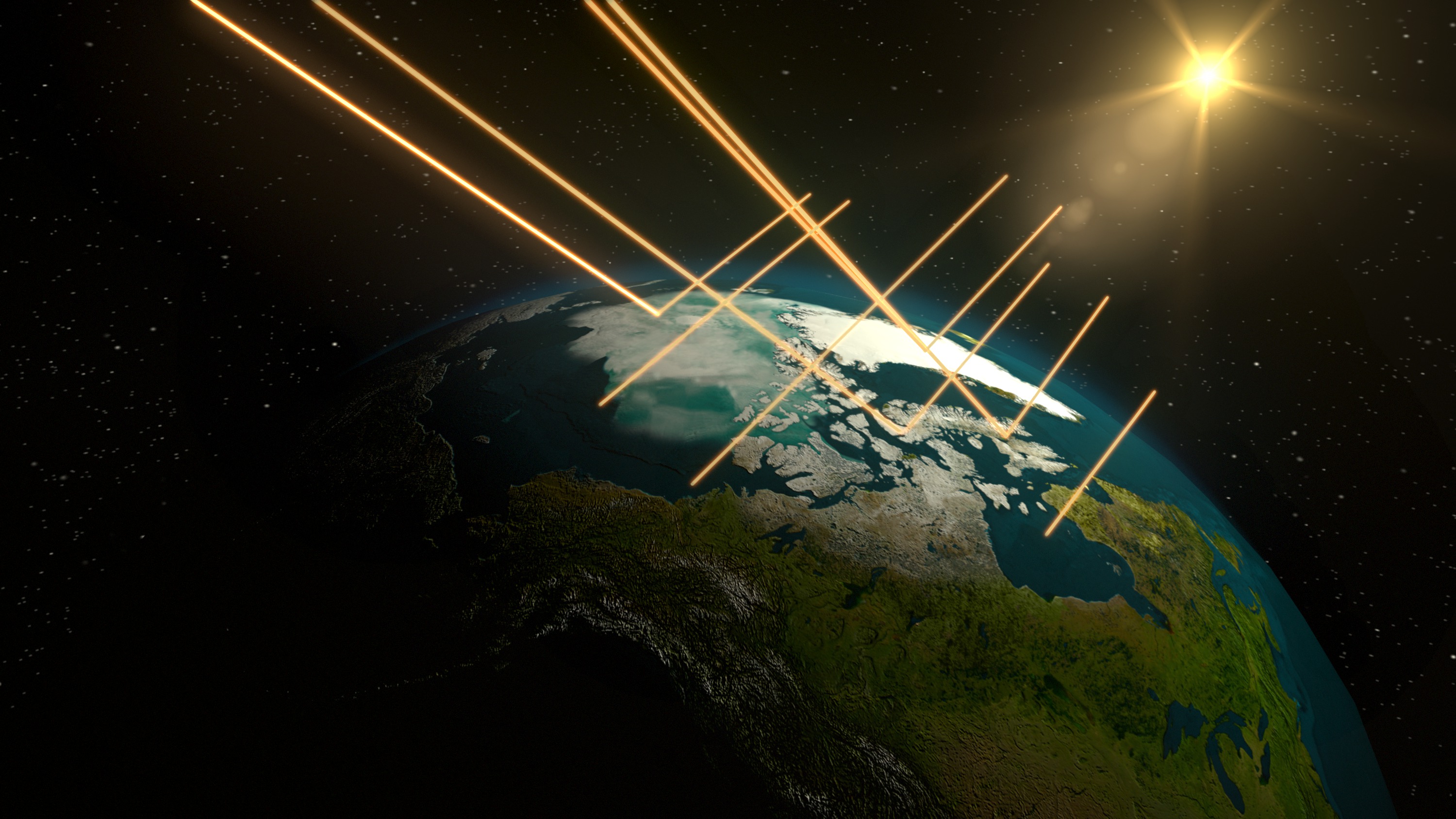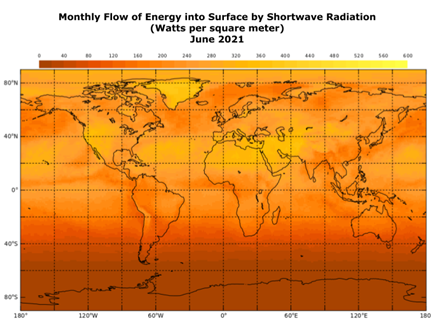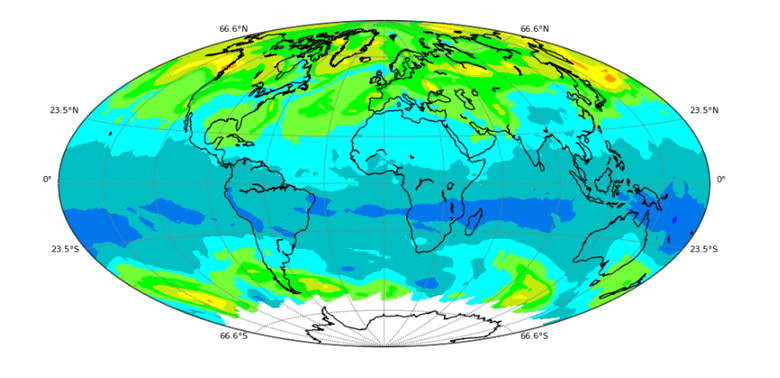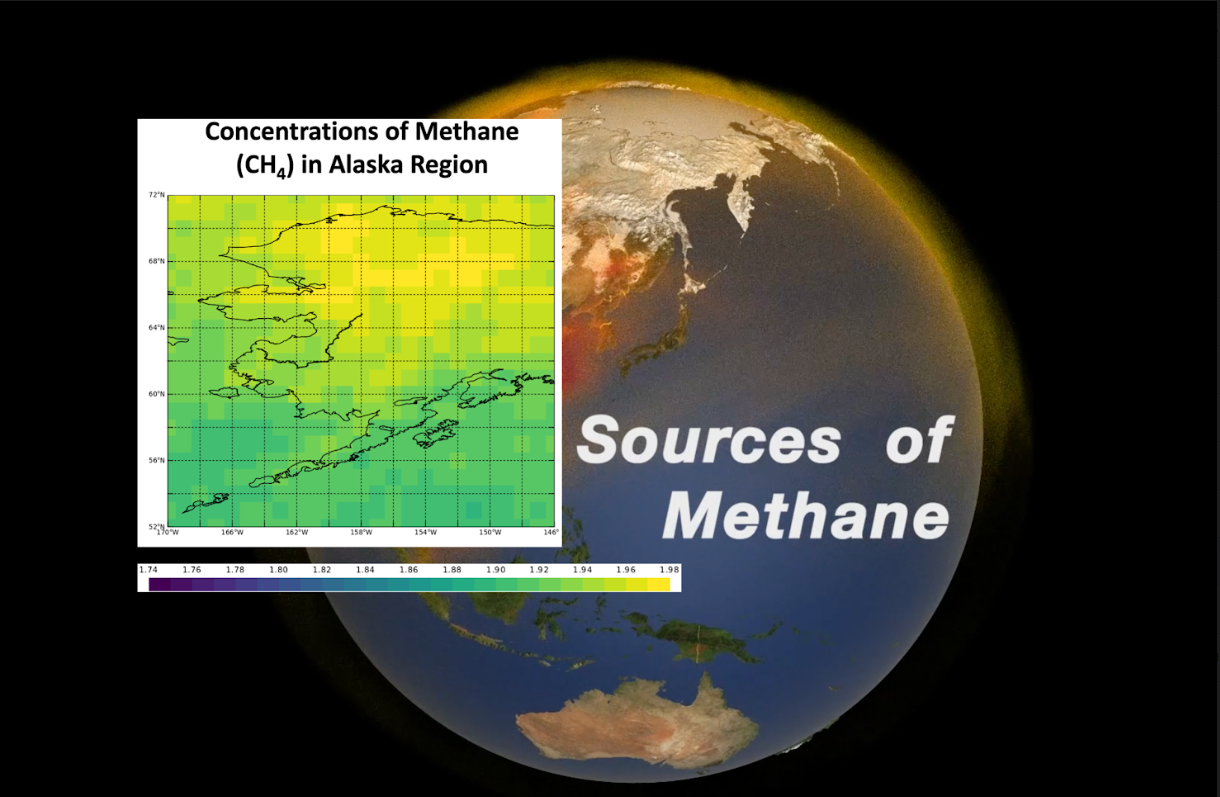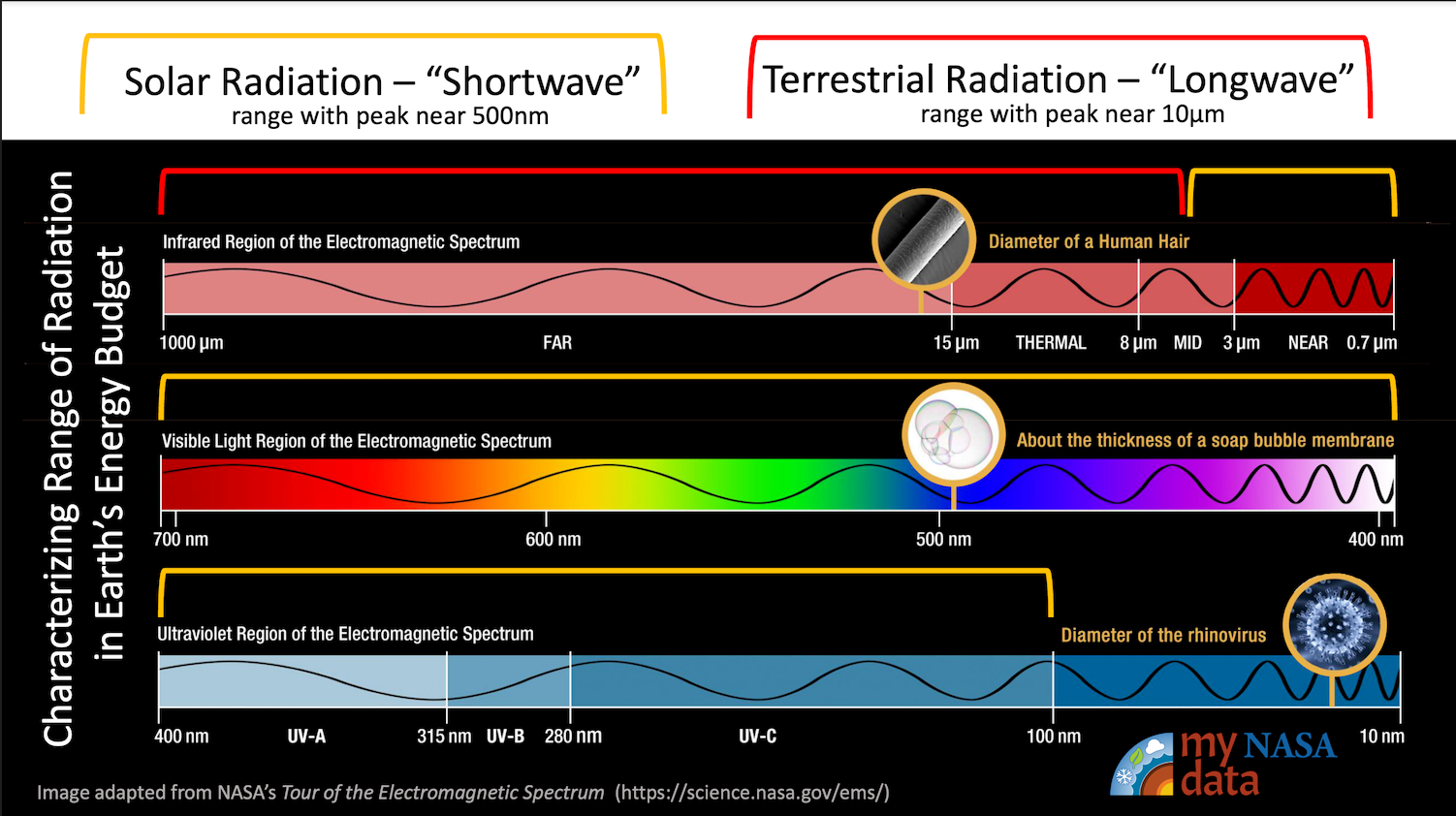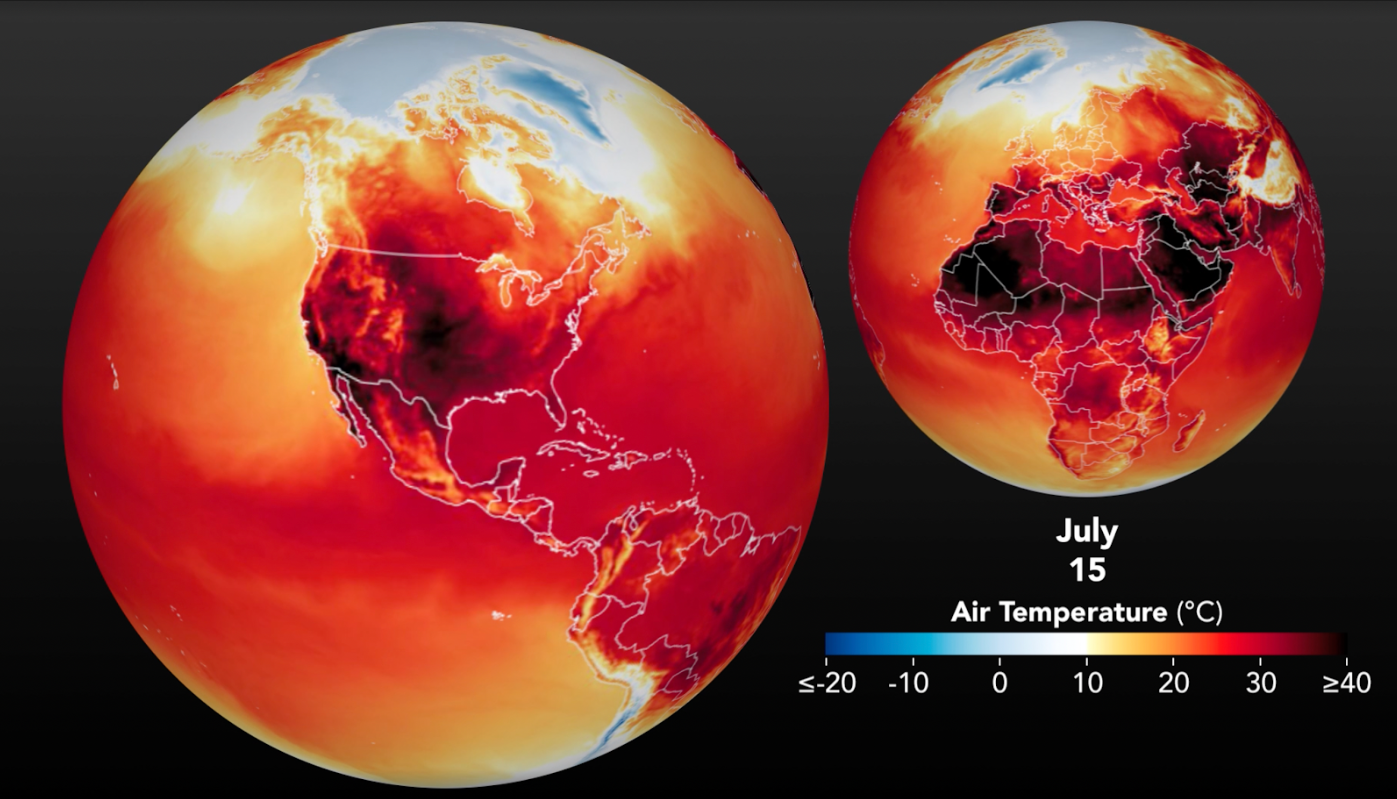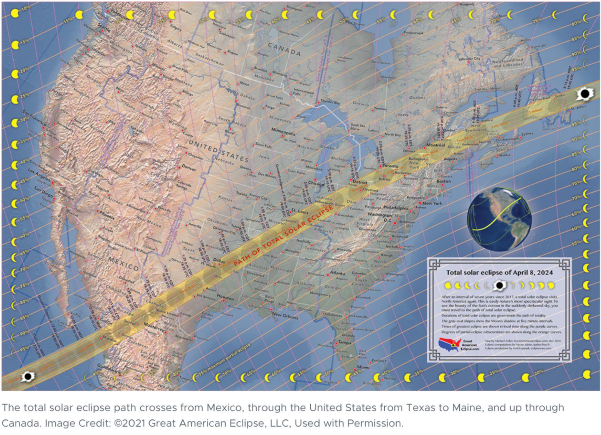Students watch a video explaining albedo and its impact on Earth. The video shows visualizations of albedo across Earth and how it can change. Students will interpret the images in the video and answer questions about albedo.
List of all Earth as a System Mini Lessons




The Great Smoky Mountains have a unique climate and weather pattern. Students will review a Landsat image and read about the history of the area and why Native Americans called the area “Shaconage.” Then they will answer the questions about what caused the unusual “blue smoke.”
Students differentiate between data sets of monthly shortwave radiation and monthly cloud coverage to discover a relationship between radiation and clouds by answering analysis questions.
Students analyze the data and details of a complicated graph by identifying components and data patterns.
Students will watch a short video that explains albedo and how it plays an important role in Earth’s Energy Budget.
Students watch a short video to gather information about sources of methane emissions and then extend their understanding of these sources to evaluate monthly trends in the Alaska region, ultimately making connections to Earth’s energy budget.
Using an infographic, students describe differences in electromagnetic radiation that is part of a model of Earth’s energy budget by applying the defined terms of Shortwave Radiation and Longwave Radiation.
By investigating the data presented in a model that displays extreme summer air temperatures, students explain energy transfer in the Earth system and consider the impact of excessive heat on local communities.
In this activity students will make observations about the objects, size, distance, and motion of the Sun, Earth, and Moon during a solar eclipse.
Students will analyze a projected map of the April 8, 2024 total solar eclipse across the US, with an accompanying data table of the locations and times, to explain how people in different locations experience a solar eclipse.






